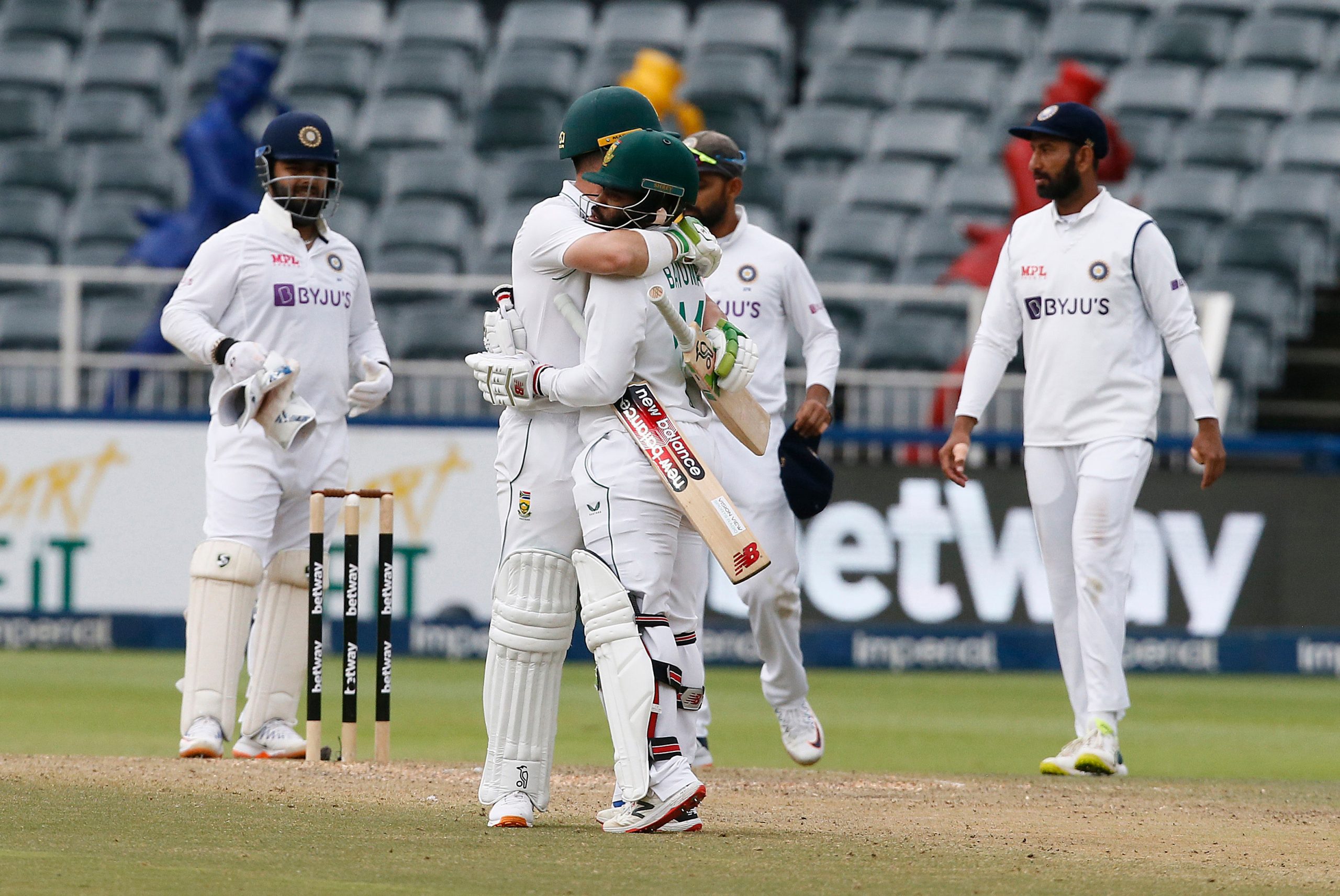South Africa snatched a seven-wicket victory over India on the fourth day of the second Test in Johannesburg on Thursday to level the ongoing three-match series at 1-1.
India had played five Tests in Johannesburg prior to this match, winning two and drawing three. Rishabh Pant’s self-sabotage and a weak middle-order, as well as South Africa’s large roller advantage and poor catching, contributed to their maiden defeat at Wanderers. Virat Kohli’s absence was also a major impact.
Also read: Tale of the tall and fast Marco Jansen of the 4 wicket haul at Wanderers fame
Captain Kohli’s absence
India not only lacked their finest batsman on a tricky pitch, but they also lacked his leadership intensity. Kohli has been scoring 30s and 40s even during a long layoff, and as a captain, he thrives in pressure circumstances, as evidenced by India’s victories over South Africa at Wanderers in 2018 and England at Lord’s last year.
With South Africa on the verge of triumph, players’ shoulders began to slump. Nobody sought to frighten Dean Elgar with a brash demeanour. India began to go through the motions after the hosts passed 200.
Also read: WTC points table: Where do India stand after defeat against South Africa?
Pant’s self-sabotage
That was the difference between giving South Africa a win target they thought they could achieve and building a lead of almost 300 points, making victory almost impossible for the hosts. Those 60-plus runs may have made a big difference in a low-scoring game under challenging conditions.
Pant entered the crease after Cheteshwar Pujara and Ajinkya Rahane had placed their careers and, more crucially, the team, on the line. They took a lot of punches and didn’t even flinch. Kagiso Rabada, on the other hand, had no time to soften up Pant with a bouncer before charging down the track and getting out to an ugly whiff.
Also read: Hanuma Vihari deserves similar backing to Ajinkya Rahane: Gautam Gambhir
Contrary to popular belief, the wicketkeeper-batsman possesses a decent defence, and when he employs his offensive skills wisely, he can take the game away from the opposition, as he did last year against Australia at the Gabba. However, rash dismissals have piled up recently, implying that Pant isn’t learning from his mistakes.
Fragile Middle-order
In this game, India’s middle-order implosion in the first innings cost them dearly. Only 23 runs had been scored between Pujara, Rahane, and Hanuma Vihari, as the tourists fell to 91/4 from 49/1 at one point. India’s middle-order struggled in the first Test as well.
However, Rahul’s century and Mayank Agarwal’s half-century had put them in a strong position to win. India’s opening combination didn’t gel at Wanderers, and there wasn’t much resistance on offer aside from Ravichandran Ashwin’s knock in the first dig and Pujara and Rahane’s struggle in the second.
Also read: South Africa vs India: Rahul Dravid confident of Virat Kohli’s return to 3rd Test
Catches that lost matches
This has been a repeating motif throughout the book. Pant’s dropped catch was important, as was Shardul Thakur’s failure to hold on to Temba Bavuma’s caught-and-bowled chance, despite the latter being yet to open his account. It was a costly drop, given South Africa’s fragile underbelly and the fact that Bavuma, along with Elgar, has been their most consistent batsmen in the series. The game was still wide open at 180/3 and 240 to win.
During their tour of Australia last season, India dropped more than 30 catches. They also lost a couple of wickets in the first Test against South Africa. Rassie van der Dussen inside-egged an Ashwin delivery on nought on Day Three at Wanderers, a half-chance was not taken at leg-slip.
Also read: Suddenly look a lesser team: Internet reacts to India’s loss in 2nd Test vs South Africa
Having a rolling advantage
The hosts had the advantage of employing back-to-back heavy rolling on a surface with varying bounce and some obvious cracks before beginning their chase on the third day and fourth evening. The use of a hefty roller settles the pitch for at least one hour, putting the devils to rest and preventing the hosts from losing wickets in clusters both yesterday and today.
Siraj’s hamstring injury
Mohammed Siraj was essentially worthless in this Test due to a hamstring ailment suffered on the first day. On Day Two, the fast bowler returned to bowl a few overs, but he was still bowling at 130kph. In the first innings, he only bowled 9.5 overs and only six overs in the second.
Also read: Dean Elgar reveals how he charged up Kagiso Rabada to win Johannesburg Test
A fully fit Siraj could have put tougher questions to Elgar with his natural entering deliveries, the ball departing the left-hander. His injury was a setback for his teammates.
Lukewarm Rahul
Because Kohli’s decision to withdraw from the second Test due to a back ailment came just hours before the game, Rahul likely didn’t have enough time to prepare to lead India for the first time. Rahul’s batsmanship was not overburdened by the extra duty, as evidenced by his half-century in the first innings.
However, his captaincy under pressure, particularly during South Africa’s second innings run chase, left a lot to be desired. Rain delayed the start of the fourth day’s play, and when it started in overcast conditions, India didn’t deploy their sole swing bowler, Shardul, upfront.
Also read: Stand-in skipper KL Rahul scores 50, delivers a lukewarm performance
After a seven-for in the first innings, Shardul was also on a high note. South Africa had already settled into a rhythm by the time he was introduced today, after nine overs of play. With wetness on the top layer of the pitch, giving Ashwin just two overs and withdrawing him as the off-spinner was settling into a great rhythm didn’t bode well for India. Elgar was also free to choose his singles from the 45.






